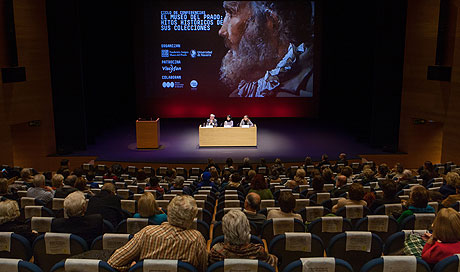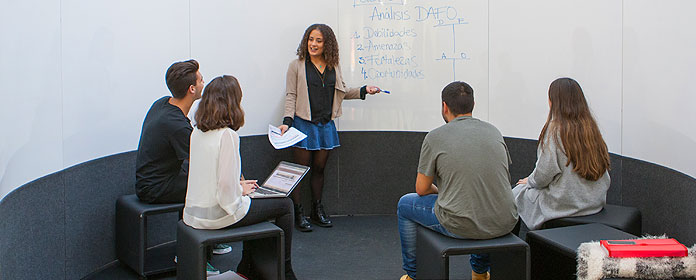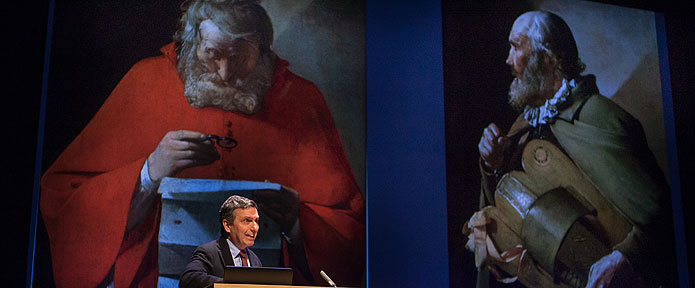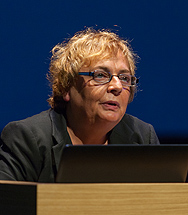"The Prado is a complicated building to understand, but in which very important moments of our history are crystallized."
The architect and Full Professor, Luis Fernández-Galiano, gave the last lecture of the series on The Prado Museum.

On the same day that Miguel Zugaza, director of the Prado Museum for the last 15 years, announced his departure, the architect Luis Fernández-Galiano gave the seventh and last lecture of the cycle "The Prado Museum: historical milestones of its collections", "The Prado Museum: historical milestones of its collections"., organized by the Fundación Amigos del Museo del Prado and the School of Philosophy y Letras at partnership with the Museo Universidad de Navarra.
Under the degree scroll Del Gabinete al Campus: the transformations of the Prado Museum's headquarters, the Full Professor reviewed the most important milestones in the construction of the building and the configuration of its particular Campus from its origin, commissioned by the Count of Floridablanca to the architect Juan de Villanueva, to the present time, whose project expansion has just been awarded to the programs of study headed by the British architect Norman Foster and the Spanish architect Carlos Rubio, and which will rehabilitate the former Kingdom Hall of the Palacio del Buen Retiro to gain 2.500 square meters of exhibition space. "Although in the constructive history of the building that has taken more than two centuries, some twenty architects have intervened, its main protagonist was Juan de Villanueva, the best representative of international neoclassicism in Spain," said Fernandez-Galiano. "The Prado is a complicated building to understand, but in which very important moments of our history are crystallized."
In 1785, Villanueva presented two projects to the Count of Floridablanca in response to the request of the Minister of State, of which the one that contemplated two first floors with interior circulations was chosen. Public utility was an important condition of the works of the Enlightenment and Villanueva's future building had in this sense a double commitment: to beautify the city and to create an establishment for study, research and public instruction. "The idea was to construct a "multi-purpose" building, which could house in its interior a cabinet of natural history, an academy of natural sciences with capacity for its instruments, laboratories, classrooms and Library Services, and a large hall for academic meetings."
"The works progressed at a good pace during Floridablanca's ministry. However, after being exonerated from his position in 1792, construction entered a slower process. With the building still unfinished, the Napoleonic invasion took place and the building was used as a barracks, leaving it devastated."
Two Pritzkers in the extension: Moneo and FosterThe rehabilitation of the building progressed gradually until, in March 1818, Ferdinand VII, with the decisive intervention of his wife Maria Isabel de Braganza, made public his decision to restore the Villanueva building at his own expense in order to house many of the works from the royal collections for their conservation, for the study of the professors and the recreation of the public. At that moment, the transformation of the building into a painting gallery began in earnest.
When the Prado Museum, then the Royal Museum of Paintings, was created in 1819, the Prado de los Jerónimos building designed by the architect Juan de Villanueva was chosen as its headquarters. This building was enlarged and remodeled on numerous occasions in order to meet the needs that arose as the collection was enriched and adapted to new uses. "Within all this constructive history, we can say that the twentieth century has been the century of extensions: Fernando Arbós in 1914, Pedro Muguruza between 1943 and 1946 with the construction of the new exterior staircase of the Goya façade, Fernando Chueca Goitia in 1952 and several more names, until 2007, with the most important expansion in its history: that of Moneo, where the "Campus del Prado" was thought for the first time, with a sum of buildings of which dependencies of the Hieronymite Monastery and the Buen Retiro Palace would form part.

The future expansion of the Prado, which includes more than 5,000 square meters of additional space, including 2,500 square meters of exhibition space, will be carried out at position by another award Pritzker, the British architect Norman Foster, who at partnership with the Spanish firm of Carlos Rubio Carvajal will be in charge of renovating the Salón de Reinos. "The heart of this proposal is the reconstruction of the Hall of Kingdoms, which will serve as a new area of exhibition, but it is also important to highlight the facade, that great portico with bronze pillars, which leaves the museum open to the city," said Fernandez-Galiano.
The configuration of the Prado collections in seven sessionsThe series "The Prado Museum: historical milestones of its collections", which was attended by 250 people atattendance average , was inaugurated by Francisco Calvo Serraller, Full Professor of Art History, currently director of the Prado Museum's annual series of conferences. Throughout 7 sessions, which have taken place every Wednesday in the Museum of the academic center, the aim has been to learn how the collections of the art gallery have been configured, through the individualized commentary of some of the masterpieces that have been incorporated. Among the speakers were Miguel Falomir, director attachment of Conservation and research of the Prado Museum; Rocío Sánchez Ameijeiras, professor of Art History at the University of Santiago de Compostela; Gonzalo Borrás, Professor Emeritus of Art History at the University of Zaragoza; Andrés Úbeda, head of Conservation of Italian and French Painting up to 1700 at the Prado Museum; Manuela Mena, head of Conservation of 18th Century Painting and Goya at the Prado Museum; and Luis Fernández-Galiano, Full Professor of Projects at the Escuela Técnica Superior de Arquitectura de Madrid, who was in charge of the last lecture.
At the closing of the cycle, which has the sponsorship of Viscofán and the partnership of Fundación Diario de Navarra, were present the manager of the area academic of the University of Navarra Museum, Nieves Acedo, and the dean of the School of Philosophy and Letters, Rosalía Baena, who wanted to value the role played by museums in disseminating the research and teaching in the field of Humanities and put them at the service of society. "Museums make the humanistic perspective tangible, material. They manage to capture the attractiveness and power of art. They manage to socially disseminate the value of the Humanities, those disciplines that are often forgotten, but which only they manage to explain to man, in their imaginative dimension, with art, in their expressive dimension, with the language, in their historical or reflective dimension".




